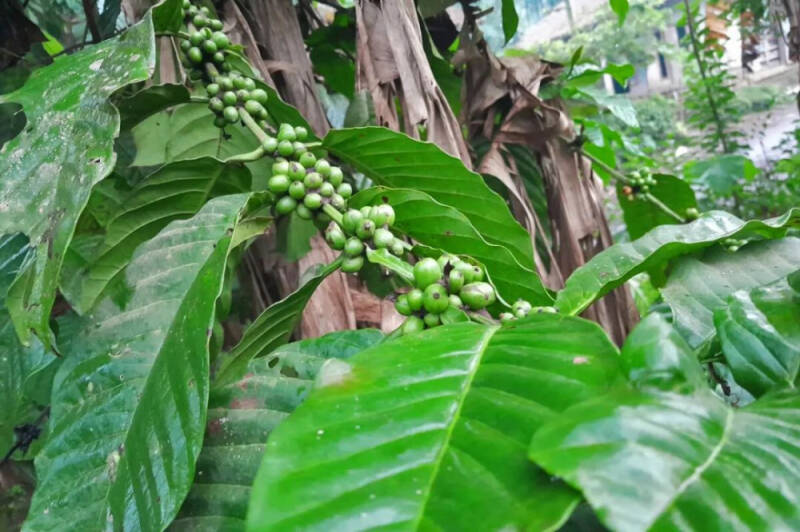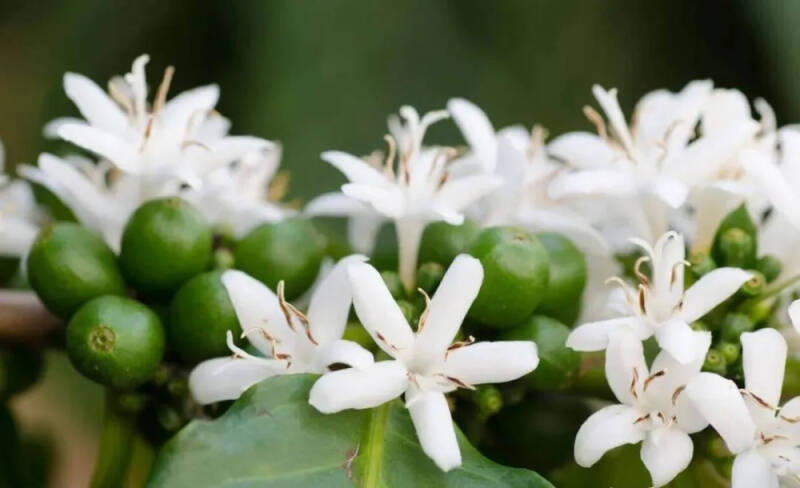Coffee production in Indonesia will plummet this year due to bad weather conditions.
Indonesia, the world's fourth-largest coffee producer, is second only to Brazil, Vietnam and Colombia, but its farmers are less productive than their competitors, DCN reported. And the weather and climate problems are serious. In East Java, production has dropped sharply due to chronic water shortage, which leads to undernutrition of fruits and attracts pests. And the increasingly frequent extreme weather may pose a challenge to the viability of some small farmers in the lowlands of Indonesia, and Bing expects production to fall by more than 20% this quarter.

One of the producers said that coffee fields on the slopes of eastern Java, Indonesia, would produce about 2.5 metric tons of coffee beans in a quarter in good weather, but this year, production is expected to be less than one tonne. Over the past 2020-2022, Indonesia has been affected by La Nina climate to cause extreme rainfall, and long periods of torrential rain can easily flood coffee flowers before they bear fruit. La Nina then turned into El Ni ñ o, with a severe drought in 2023, while persistent drought and lack of water led to stunted coffee flowers and withered leaves.
As a result, Indonesia recorded nearly 12 million bags of 60 kg coffee production during the 2022 and 2023 seasons, but as the current El Ni ñ o continues and causes high fever in low-lying coffee-growing areas, total coffee production is expected to plummet to less than 10 million bags this year, and this year's coffee harvest is expected to be the lowest in more than a decade.

In addition, due to extreme weather and supply shortages caused by drought, the price of rice, a staple in Indonesia, has soared, and the rise in food prices has prompted farmers to participate more in rice cultivation. And because of the bad weather, many coffee trees are deteriorated and difficult to recover and need to be replanted. However, official data show that in recent years, farmers have replanted only a few coffee trees in Indonesia, which also limits the ability to produce high yields.
And research shows that climate change may reduce the amount of land available for coffee cultivation in Indonesia by 21-37%. In addition, Indonesia has a population of 276 million, but coffee farmers are much less productive than neighboring Vietnam, which produces nearly three times more coffee than Indonesia. Many farmers believe that the main reason is that the government has done too little to support coffee agriculture, and the prices of chemical fertilizers are scarce and high.
Moreover, experts at the Indonesian Coffee and Cocoa Research Center say El Ni ñ o will have a positive impact on Indonesia's high-altitude coffee-growing areas, but for low-altitude areas and forests, high temperatures and droughts can have devastating consequences. In addition, according to Indonesia's national meteorological agency BMKG, El Ni ñ o will last until around April 2024. This worries the farmers and is expected to halve the coffee harvest this year.
Important Notice :
前街咖啡 FrontStreet Coffee has moved to new addredd:
FrontStreet Coffee Address: 315,Donghua East Road,GuangZhou
Tel:020 38364473
- Prev

What is the balance of hand brewed coffee? Where is Blue Mountain Coffee? Why is it so expensive? Advantages of Blue Mountain Iron Pickups
"Balance" is a somewhat transparent description of the presence in coffee. The reason is that most people don't understand what it really means. Many friends assume that it refers only to the description used to achieve a balance between sour, sweet and bitter flavors in the taste of coffee. But in fact,"balance" can not be
- Next

Panamanian Coffee beans | introduction to the Green Standard washing Rose Summer of the Jadeite Manor in Bokui Special area
When it comes to coffee, we have to mention rose summer. In 2004, Emerald Manor used rose summer varieties to participate in the best Panama (BOP) competition and bid, and made the estate and rose summer varieties famous with excellent results and auction prices. In recent years, Rosesia has been one of the most popular varieties in the world.
Related
- Why does hot American coffee taste bitter? Difference in proportional concentration between hot American and ice American
- Is espresso stored overnight in the refrigerator harmful to your body? Is frozen coffee better than freshly ground coffee?
- What parameters and proportions of water temperature should be used to grind and brew fresh coffee beans? Why can't I drink freshly roasted coffee right away?
- Customers have "changed" Manner's new products! Shop assistant: Please don't mess around!
- Remove sockets in customer areas at Starbucks stores?! Netizen: I won't go if I really tear it down
- What is the difference between the taste steps of sun-dried coffee and washed coffee? Why is sun-cured coffee sweeter and washed coffee sour?
- The recipe for salty grapefruit dirty is revealed! Coffee Festival salty grapefruit dirty coffee making materials parameters ratio milk share!
- How about the flavor of Sunlight 74158 at Sidamo Banshaha Mathieu Processing Factory in Ethiopia? 74158 Share the proportion of coffee brewing parameters!
- What effect does Italian American coffee with filter paper have? Will coffee taste better if it is put on filter paper at the bottom of the powder bowl?
- What is the color difference in coffee beans? What are the characteristics of honey processed coffee beans? Why are the anaerobically treated coffee beans uneven in color?

